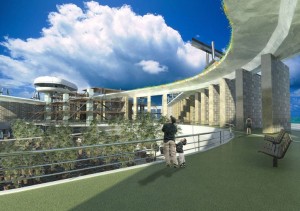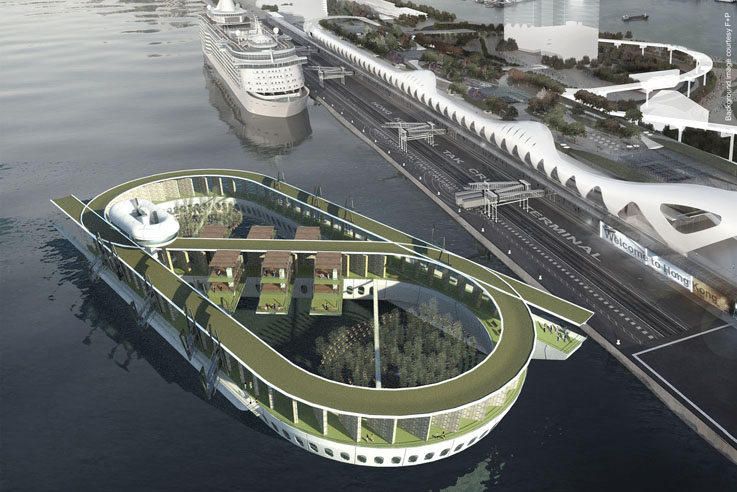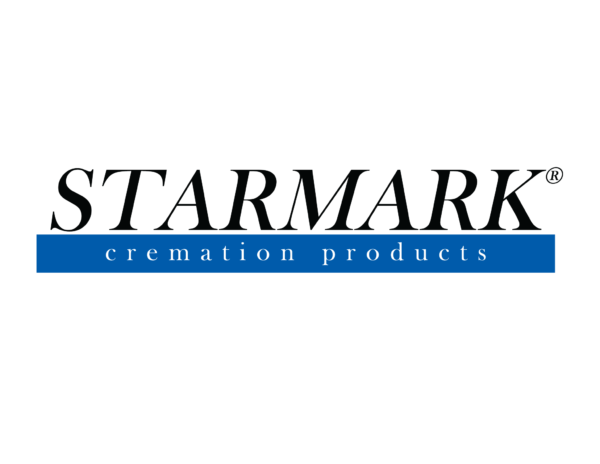Floating Cemetery Offers Cruise for Cremains
Guest article from: MySendOff.com
It is one of the most densely populated areas of the world and recognized as one of the world’s leading international financial centers. With a population of over 7.1 million, a skyline of glitzy skyscrapers, space in Hong Kong has increasingly become scarce. While developers are being pushed out of packed central locations, one London and Hong Kong-based architecture firm, known as BREADstudio has offered one solution for conserving property.
Using the principles of cemetery evolution, BREADstudio has developed a proposal which showcases a design that would combine a columbarium with that of a cruise ship, in order to create the first offshore cemetery calledFloating Eternity.
“Floating Eternity is a basic prototype of its kind,” said BREADstudio’s in a press release. “Hence, the design emphasizes on the strategy and mechanism rather than its visual appearance. Similar to cruise design, there could be millions of variations to suit different market demands. Columbarium has become the most acceptable choice for our last stop.”
However, for BREADstudio, it was a matter of making a whimsical proposal. In fact, their proposal comes to light due to the political atmosphere that has been growing more intense in Hong Kong during recent years – particularly concerning civil developments. As it is, at this time there are three building types that are currently becoming more difficult to construct in the special administrative region of the People’s Republic of China. These include a hospital, landfill and cemetery.
To remedy the limited availability of land in Hong Kong, BREADstudio based the proposal upon the deep natural harbor that is enclosed by the South China Sea, saying “An offshore cemetery is therefore the next alternative, comparable to the existing sea burial that occupies no space at all.”
But that isn’t the only benefit an offshore columbarium like Floating Eternity would offer.
Since the 1940s, cemetery sites in Hong Kong have been continuously evolving. Where it was once common for ancestors to be buried near villages, often in the high altitudes of the region to maximize feng shui, the 1980s saw a growth in the popularity of columbaria, which would see many of the deceased traditionally housed in temples. But as dedicated building complexes were soon developed to provide higher capacity, prices soon increased and the proximity of multi-level columbaria soon began presenting dissatisfaction with nearby community residents.
This is how Floating Eternity would prove even more beneficial. Not only will it offer a solution to the limited availability of land, it also reduces the cost that were previously based on location and orientation. Through Hong Kong’s long coastal lines surrounding the region, Floating Eternity utilizes the geographical constraints through sea habitation, offering a more sustainable proposal than land reclamation.
How Floating Eternity would work is, designed like a cruise ship, it would remain at sea year-round, only docking biannually for the weekends surrounding the Ching Ming and Chung Yeung Festivals. It would then park at different piers during different days to allow visitors of each location an opportunity to honor their ancestors during the festivals, while lessening the threat of crowd congestion to one area.

During the year, families will be able to visit Floating Eternity through ferry services while it is stopped in the South China Sea. However, with BREADstudio’s proposals, families can do more than just visit their ancestors and loved ones. What Floating Eternal further offers in terms of bringing back the traditional cemetery experience combined with modern convenience and beauty is more space for families to enjoy a picnic on the grass deck, and even purchase food from the restaurant area on the lower deck, which would cater to visitors of different religions, such as offering Buddhist vegetarian meals.
Floating Eternity also offers one particularly exceptional concept in terms of niche burials. Taking into account the practice of feng shui, which since it was first written about in The Book of Burial by Guo Pu during the Jin Dynasty (265-420), saw feng shui or Yin House feng shuias a practice of seeking proper burial locations to influence long-term prosperity on a lineage and its descendants – Floating Eternity would offer a columbarium wall which would sit on a rail track. Using tidal power to supply the track with energy, the walls would move forward slowly, allowing the walls to travel along a loop track, giving an equal opportunity for best orientation. Further, the walls will be positioned at an angle to the cruise deck, allowing the walls an open view to the beautiful ocean scenery.
While it might be seen as a costly endeavour to build a ship solely for use as a cemetery, BREADstudio took into account the current land value and the area required for accommodating the equivalent capacity as part of an economic strategy. As it is, the Hong Kong census is expecting the number of deaths from 42,700 per year currently to rise to roughly 82,400 by the end of 20 years. With the current issues being the limited availability of land, BREADstudio estimates Floating Eternity will have the ability provide columbarium space of 370,000 niches.
Meanwhile, the average cost of columbarium space on land costs 5000 Hong Kong Dollars (HKD), while many sharing the same scenery can even cost up to HKD 100,000, BREADstudio estimates the first phase of the floating cemetery can earn up to 18.5 billion with all niches purchased.
While the ship only takes into account for 370,000 niches, Floating Eternity will also be equipped with the option of additional columbarium walls to be stacked upon other tracks, further allowing the cemetery to continue to operate as a self-sustainable mechanism through its usage of tidal power.
In the meantime, while the proposal was first published in the Journal of Hong Kong Institute of Architects, it has been generating considerable press worldwide and with increasing advertisements occuring outside of Hong Kong for columbarium developments in Shenzhen (located north of Hong Kong) and Macau, located to the east of Hong Kong, BREADstudio is in the process of submitting a more detailed proposal to the related government departments for their review.
“However, I have to say that relying on government may still be relatively passive compared to private sectors,” said BREADstudio in a press release. “We believe there would be a much bigger incentive from private developers to push this project forward.”




